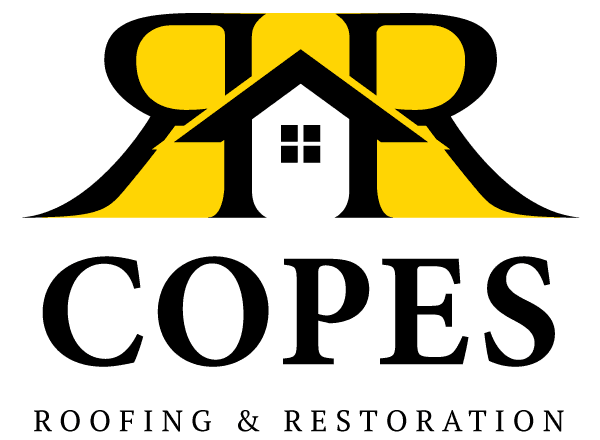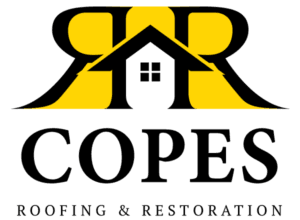Are your gutters sagging, leaking, or overflowing when it rains? Damaged gutters can lead to serious problems, including foundation damage, basement flooding, and landscape erosion. Fortunately, many issues can be fixed with some basic tools and a little know-how.
Don’t have time to tackle repairs yourself? Copes R&R Construction offers professional gutter repair and replacement services to keep your home protected. Book an appointment today and let our experienced team handle all your needs.
5 Types of Gutter Systems and Their Common Issues
Aluminum Gutters
Aluminum is the most popular choice for residential homes due to their lightweight nature, rust resistance, and affordability. They typically last 20-30 years with proper maintenance. They also come in various colors to match your home’s exterior. Aluminum can be easily shaped and customized to fit the specific dimensions of your home’s roofline.
Common Problems with Aluminum
- Denting from ladder impacts or falling branches
- Seam separation at joints, leading to a leaky gutter
- Corrosion when in contact with other metals
- Bending or sagging under heavy debris or snow loads
- Paint peeling or chalking after prolonged sun exposure
Vinyl Gutters
Vinyl offers an economical option for homeowners on a budget. They are lightweight, easy to install, and resist rust and corrosion naturally. Vinyl systems come in limited colors but maintain their appearance without requiring painting and are popular for DIY installations due to their snap-together design.
Common Problems with Vinyl
- Becoming brittle and cracking in extreme cold weather
- Sagging between hangers when exposed to heavy rain or snow
- Fading and degrading from prolonged UV exposure
- Warping or bending during temperature fluctuations
Steel Gutters
Steel provides exceptional strength and durability. This makes them ideal for areas with severe weather conditions. They can withstand significant snow loads and impacts from falling debris. Steel gutters typically come in galvanized or stainless steel options, with the latter offering superior rust resistance.
Common Problems with Galvanized Steel
- Rust and corrosion, particularly at seams and joints
- Heavy weight requiring robust fascia board support
- Difficult to modify or adjust once installed
- Paint chipping leading to accelerated rusting
Copper Gutters
Copper represents a premium option that adds architectural interest and value to upscale homes. This type of gutter develops a distinctive blue-green patina over time that many homeowners find attractive. Copper is extremely durable and can last 50-100 years with minimal maintenance.
Common Problems with Copper
- High initial investment cost
- Theft risk in some areas due to the gutter material value
- Susceptibility to denting during installation or maintenance
Seamless Gutters
Seamless types are custom-formed on-site to fit your home’s exact dimensions, eliminating most joints that could potentially leak. They are typically made from aluminum but can also be fabricated from steel or copper. The continuous design significantly reduces maintenance issues and extends the system’s lifespan.
Common Problems with Seamless
- Requires professional installation with specialized equipment
- Higher initial cost compared to sectional systems
- Difficult to replace small damaged portions
- End caps and downspout connections can still develop leaks
- Sagging may occur if hangers are spaced too far apart
A Step-By-Step Guide to DIY Gutter Fixes
- Gather necessary tools and safety equipment – You’ll need a sturdy ladder, work gloves, scoops, a garden hose, a bucket, gutter sealant, replacement gutter hangers, and potentially replacement gutter sections.
- Clean out all debris – Remove leaves, twigs, and sediment using a scoop, working from the downspout toward the end of each section.
- Flush the system with water – Use a garden hose to wash away remaining debris and check for proper water flow toward downspouts.
- Inspect the entire system for damage – Look for cracks, holes, rust spots, separated joints, and sagging sections while the system is still wet to easily spot leaks.
- Repair small holes and cracks with gutter sealant – Clean and dry the damaged area thoroughly before applying waterproof sealant according to product instructions.
- Fix separated seams by cleaning the joint area – Apply a liberal amount of sealant to the inside of the joint and press the sections firmly together, securing with screws if needed.
- Replace severely damaged sections – Remove the damaged section by unscrewing fasteners, then cut a new piece to match and attach it using appropriate connectors.
- Address sagging by installing new hangers – Space hangers approximately every 2-3 feet and ensure proper slope for adequate drainage.
- Unclog downspout sections using a plumber’s auger or pressure washer – Insert the tool from either end of the downspout to break up and remove blockages.
- Check downspout extensions and splash blocks – Ensure they direct water at least 3-5 feet away from your foundation to prevent water damage.
- Consider installing gutter guards – Adding mesh screens, foam inserts, or surface-tension covers can significantly reduce debris buildup and future maintenance needs.
- Test your repairs with water – Run a garden hose into the system to verify proper flow and check for any remaining leaks before considering the job complete.
4 Benefits of Professional Gutter Services
Expert Assessment and Diagnosis
Professional specialists have the training and experience to identify problems that might not be apparent to homeowners. They can spot early signs of fascia damage, roof issues, and drainage problems that could lead to more serious structural concerns. A thorough professional inspection often reveals hidden damage that could worsen without proper attention.
Quality Materials and Proper Installation
Professional services have access to commercial-grade materials that aren’t typically available to consumers. These higher-quality components are designed for durability and longevity. They ensure your system stands up to years of harsh weather conditions.
Time and Safety Considerations
Working on gutters requires spending extended periods on ladders, often at significant heights and in awkward positions. Professional crews have the proper safety equipment, insurance, and training to handle these hazardous conditions safely. Hiring experts eliminates the risk of falls and injuries while saving you hours of difficult, dirty work.
Preventative Maintenance Programs
Many professional services offer scheduled maintenance programs that can extend the life of your system. These programs typically include regular cleaning, inspections, minor repairs, and adjustments to keep your system functioning optimally. Preventive maintenance often costs significantly less than emergency repairs or premature replacement of your entire system.
Conclusion
Properly functioning gutters are essential for protecting your home from water damage, foundation issues, and landscape erosion. By following the steps outlined in this guide, you can address many common gutter problems yourself and extend the life of your system. Regular maintenance and prompt repairs will save you money and prevent more serious damage to your home.
For complicated repairs, full system replacements, or if you’re uncomfortable working at heights, contact the professionals at Copes R&R Construction. Our team specializes in high-quality installation and repairs. Visit our Facebook page for project photos and customer testimonials, then schedule your appointment today.


